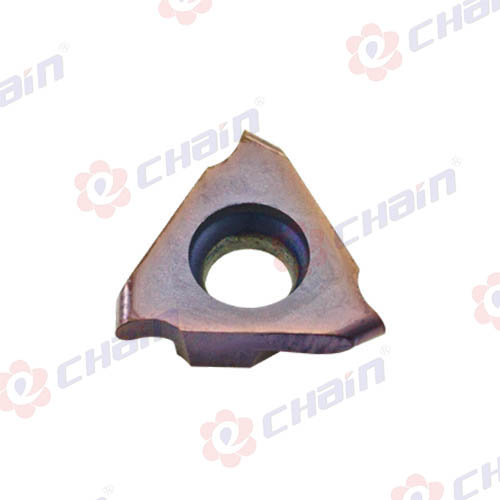Versatility Unveiled: Exploring the Dual Capabilities of Grooving Inserts for Internal and External Machining
2024-03-19
Introduction:
In the realm of metalworking, versatility is key to achieving optimal efficiency and productivity. Grooving inserts, specialized cutting tools designed for creating grooves, slots, and recesses in workpieces, offer a prime example of this versatility. Not only can grooving inserts be used for both internal and external grooving operations, but they also come in different designs tailored to suit each application. In this blog, we'll delve into the dual capabilities of grooving inserts and explore the differences in their designs for internal and external machining tasks.
Internal Grooving Operations:
Internal grooving involves cutting grooves or channels inside a cylindrical or contoured workpiece. Grooving inserts used for internal grooving are typically characterized by their compact size and specialized geometries. These inserts are designed to fit within the confines of the workpiece, allowing for precise machining of internal features such as O-ring grooves, bearing races, and internal threads. Internal grooving inserts may feature curved or angled cutting edges to facilitate chip evacuation and optimize cutting forces in tight spaces.
External Grooving Operations:
External grooving, on the other hand, entails cutting grooves or channels on the outer surface of a workpiece. External grooving inserts are available in a variety of designs to accommodate different groove widths, depths, and profiles. These inserts often feature straight or angled cutting edges and may be mounted on the exterior of the tool holder for easy access to the workpiece. External grooving inserts are commonly used for applications such as keyway milling, thread cutting, and profiling, offering versatility and precision in machining external features.
Key Differences in Designs:
While grooving inserts for internal and external machining share similar principles, there are several key differences in their designs:
1. Insert Size and Shape: Internal grooving inserts are typically smaller and more compact than their external counterparts to fit within confined spaces. External grooving inserts may have larger dimensions and different shapes to accommodate various cutting requirements and tool holder configurations.
2. Cutting Edge Orientation: Internal grooving inserts often feature curved or angled cutting edges to facilitate chip evacuation and optimize cutting forces in internal grooving operations. External grooving inserts may have straight or angled cutting edges depending on the desired groove profile and machining conditions.
3. Mounting Configurations: Internal grooving inserts may be mounted directly onto the tool holder or incorporated into specialized tooling systems designed for internal machining. External grooving inserts are commonly mounted on the exterior of the tool holder using clamping mechanisms or set screws for easy access to the workpiece surface.
Conclusion:
In conclusion, grooving inserts offer exceptional versatility for both internal and external machining operations, providing machinists with the flexibility to tackle a wide range of cutting tasks. While internal grooving inserts are designed to fit within confined spaces and feature specialized geometries for chip evacuation, external grooving inserts come in various designs to accommodate different groove profiles and mounting configurations. By understanding the differences in their designs and applications, machinists can harness the full potential of grooving inserts to achieve precision, efficiency, and versatility in metalworking operations.



